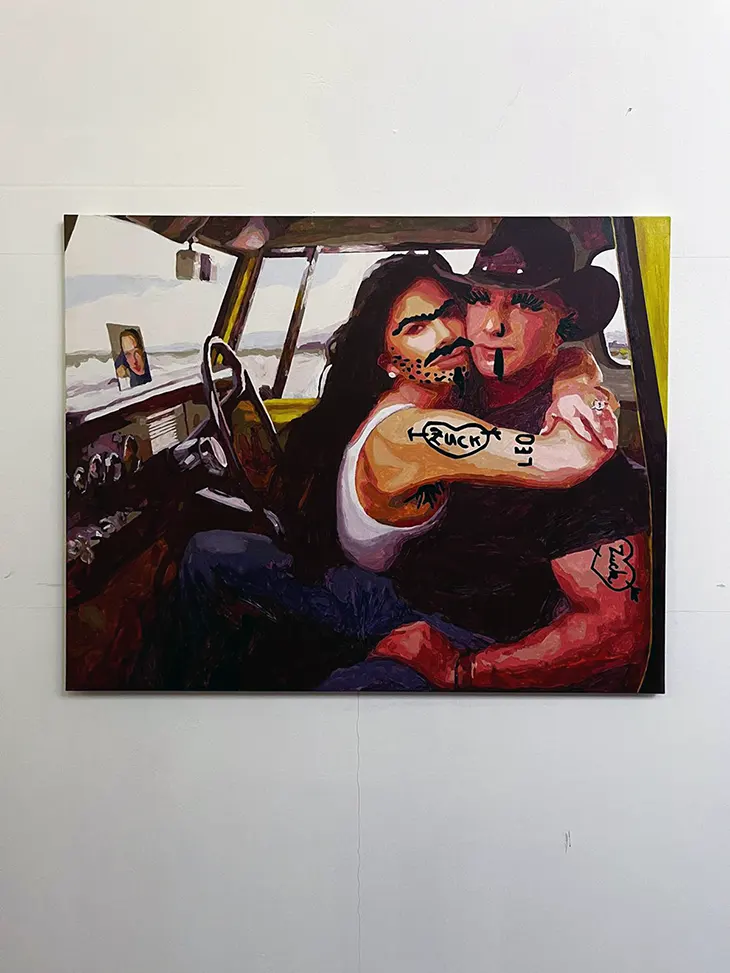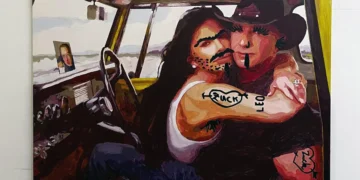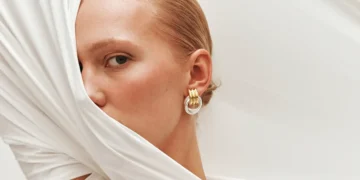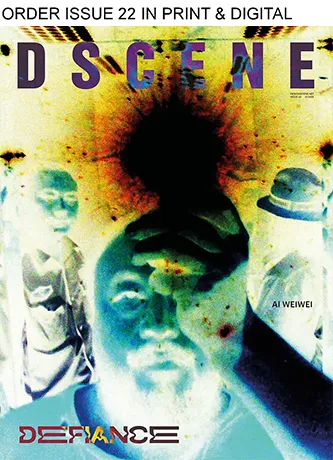
The Met Gala still likes to present itself as a cultural summit. It enjoys the illusion of autonomy, the belief that fashion gathers on those steps because it carries an internal purpose. In truth, it gathers because it must. The Gala no longer behaves as a ritual of artistic inquiry. It behaves as a hostage situation held in place by the financial power that surrounds it. Money dictates the tone, the access, the narrative, the aesthetics, and the direction of its exhibitions. The Costume Institute has reached a point where the event cannot breathe without the donors who underwrite it. The arrival of Jeff Bezos and Lauren Sánchez as primary financial backers exposes this condition with unusual clarity. The institution feels pinned under its own need for billionaire sponsorship, while the industry performs gratitude with uncomfortable enthusiasm.
DORIC ORDER
The hostage situation does not rely on threat. It relies on scarcity. Museums lack funding. Fashion institutions lack structural support. The Gala depends on donors who supply the resources required for exhibitions that draw global attention. Billionaires recognize this vulnerability and step into the space with a confidence that reads like ownership. Their presence shifts the center of gravity. The Costume Institute becomes dependent on individuals who treat cultural power as a collectible asset. The institution’s autonomy shrinks. The donors’ visibility grows. It becomes obvious who holds the key to the door.

Bezos and Sánchez did not create this dynamic. They simply reveal its severity. Their sponsorship of the 2026 Met Gala and its corresponding exhibition titled “Costume Art” signals a new scale of influence. Large donors no longer hover as background figures who attend discreet meetings with curators. They sit inside the core of the event’s identity. Their names shape the story. Their approval influences the tone. The fashion industry accepts this shift with a mixture of awe and silence. Designers treat the couple as new arbiters of cultural power. Media follows with eager praise. The museum presents them as generous visionaries. Everyone plays their role in the arrangement because the alternative is financial collapse.
The Costume Institute becomes dependent on individuals who treat cultural power as a collectible asset. The institution’s autonomy shrinks. The donors’ visibility grows.
The hostage situation becomes most visible in the way the event changes its posture. The Gala bends toward the preferences of its donors. Themes drift toward ideas that flatter them. Exhibitions adopt tones that support their public image. Invitations favor individuals who reinforce the donor’s projected world. When money enters a museum, it never enters alone. It arrives with expectations, desires, and reputational goals. The costume exhibitions cannot move in a direction that contradicts those goals. Curatorial independence becomes a negotiation rather than a principle. The donor becomes a silent co-author. The institution becomes polite, careful, and strategic. The Gala becomes a mirror that belongs to the person who pays for the reflection.

The Bezos presence introduces a different layer of contradiction. Amazon built its empire on speed, extraction, and relentless expansion. These qualities stand in tension with the values that fashion pretends to uphold during its most glamorous night. The Met Gala speaks about artistry, craftsmanship, and cultural lineage. Amazon speaks about volume, efficiency, and control. When these two worlds meet on the museum steps, the contradiction becomes aesthetic rather than political. The attire becomes the spectacle that distracts from the labor conditions underneath the narrative. The industry focuses on gowns, jewels, and guest lists. It avoids uncomfortable questions about how the wealth behind the event was produced.
The Gala bends toward the preferences of its donors. Themes drift toward ideas that flatter them.
Lauren Sánchez entered the fashion circuit with visible ambition. She appeared at Paris Fashion Week and planted herself in front-row seats with the confidence of someone determined to claim cultural space. She wore archive pieces from Chanel, Vivienne Westwood, and Balenciaga with the hope that rarity could grant authority. Critics responded with open disdain. They argued that even ’90s Galliano could not refine her public image. The industry watched her attempt to shape a persona through clothes that carried histories far older and more subtle than the performance she offered. The couple continues to try. Their Met Gala sponsorship functions like an aesthetic shield, a purchase dressed as cultural legitimacy, a bid to justify a style narrative that never quite lands, no matter how expensive the wardrobe becomes.

The hostage situation grows stronger when the industry participates in the illusion that nothing has changed. Designers treat the event as a neutral platform. Celebrities treat it as a stage for self-presentation. Media treats it as an entertainment product. Museums treat it as a celebration of culture. No one acknowledges that the event operates under the pressures of a single financial class. This denial comforts everyone involved. It allows fashion to maintain the fantasy of independence while functioning under a framework shaped by wealth that exists far beyond its own reach.
The hostage situation grows stronger when the industry participates in the illusion that nothing has changed.
The Costume Institute wants to believe that it selects its donors. The truth is simpler. It selects the donors who can keep the institution alive. That is not selection. That is survival. Survival comes with compromise. The museum compromises by accepting oversight disguised as generosity. The industry compromises by aligning its values with its benefactors. The public compromises by consuming a sanitized spectacle. Every layer participates because participation feels safer than confrontation. The hostage situation continues without visible violence. It continues through consent shaped by financial necessity.
The most troubling part of this shift lies in the effect it has on public memory. Museums curate the stories that define it. When their exhibitions become dependent on billionaire influence, the stories begin to reflect the values of a narrow elite. A museum that relies on a single donor class gradually loses its capacity to critique that class. Its exhibitions become gentle, cautious, and agreeable. Its narratives avoid friction. Its version of fashion history becomes a curated comfort zone for the powerful. The Gala becomes an annual performance of gratitude rather than a site of inquiry.
View this post on Instagram
This condition also raises questions about the future of taste. Taste is not neutral. Taste shapes what society considers beautiful, important, or worthy of preservation. When billionaire patrons influence the direction of the Costume Institute, they influence the direction of taste that flows outward from it. Their preferences frame the conversation. Their presence becomes a filter through which designers, brands, and cultural narratives must pass. Taste becomes less democratic and more aligned with the desires of people whose wealth shields them from the social conditions that affect the rest of the country.
The Met Gala sits at the center of this tension. It functions as a symbol of cultural prestige. It functions as a marketplace for visibility. It functions as a stage where wealth and beauty negotiate their public identities. It does not function as a free space where ideas grow without interference. Its connection to patrons like Bezos and Sánchez introduces a pressure that shapes its evolution. The event cannot challenge its donors. It cannot question the systems that produce their wealth. It cannot risk the loss of funding. The institution chooses compliance because compliance ensures survival.
A museum that relies on a single donor class gradually loses its capacity to critique that class.
The hostage situation also affects the audience. The public consumes the event through images that arrive polished and persuasive. The glamour becomes the sedative. The gowns provide the distraction. The exhibition provides the intellectual justification. The donors provide the structure. The public receives the final product without access to the underlying dynamics. This distance allows the event to operate without accountability. It encourages viewers to focus on beauty rather than on the conditions that create it.
The solution will not arrive from within the institution. The Costume Institute has constructed a financial ecosystem that requires billionaire support. The reliance defines its operations. It cannot shift away from this model without a structural transformation of cultural funding in the United States. The Met Gala will continue to operate under the influence of its donors because the alternative would require a radical reconsideration of how museums survive. That reconsideration has not begun. Institutions prefer stability, even when stability requires surrender.

The hostage situation is a description of a system that traps institutions inside the financial conditions that sustain them. The Met Gala stands at the center of this system. It cannot escape the wealth that supports it. It cannot resist the narratives that surround it. It cannot claim independence because its survival relies on dependence. The event becomes a symbol of culture held in place by the force of money. The donors hold the key. The industry holds the silence. The museum holds the aesthetic. The public holds the illusion.
The Met Gala becomes the annual negotiation between money and meaning, staged for an audience that prefers the costume to the cost.
Fashion still believes that beauty can override discomfort. It trusts spectacle to distract from the structure behind it. It trusts glamour to justify its contradictions. The hostage situation continues because beauty performs its role with precision. The institution relies on that performance. The donors rely on it as well. The Met Gala becomes the annual negotiation between money and meaning, staged for an audience that prefers the costume to the cost.



















